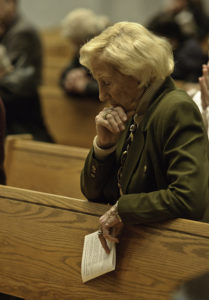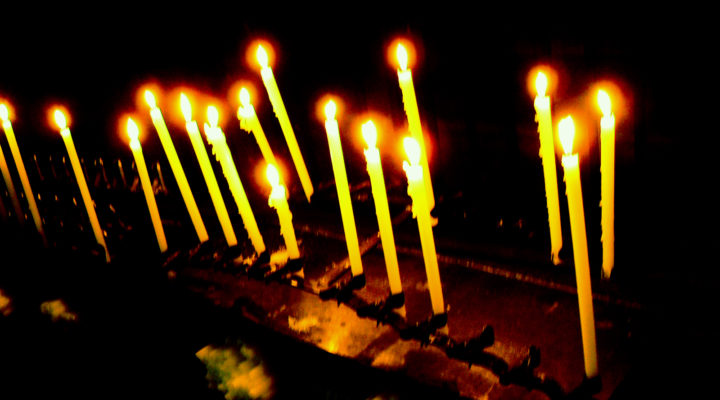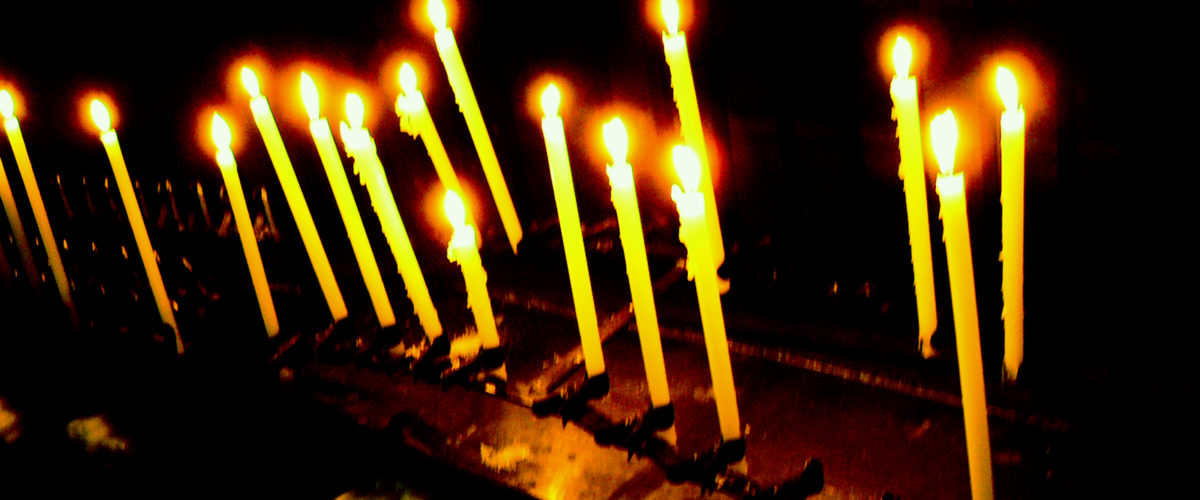The New Monastic communities get quite a bit of press.
And why not? Their adherents shun contemporary society and church to live communally. They embrace ancient Christian contemplative and worship rituals, practice radical hospitality and serve those living on the margins of American society.
Communities like The Simple Way in Philadelphia, Rutba House in Durham, N.C., and Grace and Main in Danville, Va., among others, are known for growing their own food and opening their homes to strangers.

Contemplative prayer and other monastic practices are rooted in Christian history. (Creative Commons photo by Michael Swan)
No wonder the media, and a lot of church leaders, are interested.
But those higher-profile communities are, very quietly getting some company.
Over the past several years, a growing number of churches have been slowly and quietly embracing the monastic Rule of Life approach to fellowship, discipleship growth and community service.
“These are traditional, denominationally based churches,” says Mark Tidsworth, who wrote about the phenomenon in his 2015 book Shift: Three Big Moves for the 21st Century.
They include Baptists, Episcopalians, Methodists, Presbyterians and others. They including urban, suburban and rural congregations.
Tidsworth, president of South Carolina-based Pinnacle Leadership Associates, said he has led several churches through the discernment process for developing their own Rules of Life. And he has noted others doing it.
‘Others call it a Way of Life’
Congregations that have adopted this approach to church in some ways emulate the New Monastic Movement by identifying what spiritual practices define their orders, then moving out from there.
The practices may include worshiping weekly, praying daily for one another, participating in faith formation small groups or serving the community. It can be one or all of these or other things, Tidsworth said.
Participants are often surprised to learn that many of their existing practices date back to the Middle Ages and fit into a Rule of Life, he said.
“They are nothing new. They are part of Christian history,” he said. “It is a way to take what is in our DNA and bring it to the present.”
Even so, there is often pushback in congregations where some members don’t want to change the focus or nature of the congregation, or who think the approach is too Catholic.
That’s why some congregations stick with language that fits in with the history and culture of their churches.
Instead of monastic terminology, they’ll use phrases like “core habits” and “marks of discipleship,” Tidsworth said.
“Others call it a ‘Way of Life.’ They use wording that fits their culture and allows them to engage it more fully.”
‘People are resonating with it’
The process begins with studying monastic history and the New Monastic movement, Tidsworth continued. Congregations see how the idea of the common way of life shapes both the fellowship and the individuals of a church.

Mark Tidsworth
What many discover is that shared sacred life creates a hunger to explore where their new identity can take them.
Whatever their particular expressions turn out to be, congregations report increases in morale and energy — as a group and as individual members — Tidsworth said.
“Some churches say their energy level and spirituality had declined, and that this has helped them find some renewal in their faith.”
The Rule of Life concept is a powerful one for churches because the postmodern age, and all its challenges to the church, call for authenticity in faith, he said.
While the new or old monastic approach does not lend itself as a tactic for church growth, it can be alluring to Millennials and others yearning for a deeper Christian life.
“It seems new, but it’s not,” Tidsworth said. “And people are resonating with it.”


